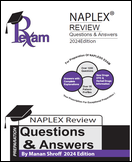
Which of the following statements is/are NOT TRUE about hypertension therapy according to NEW JNC8 guidelines? [Select ALL THAT APPLY].
a. African Americans respond to ACE Inhibitors/Angiotensin Receptor blocker quite well.
b. Beta or alpha blockers are recommended initial therapy for nonblack patients.
c. Thiazides produce better cardiovascular outcomes than ACE inhibitors in African Americans.
d. Most African Americans will need at least three antihypertensives to control blood pressure.
e. In nonblack patients with diabetes, ACE Inhibitors/Angiotensin Receptor blockers are considered to be initial therapy.
Which of the following statements is/are NOT TRUE about hypertension therapy according to NEW JNC8 guidelines? [Select ALL THAT APPLY].
a. African Americans respond to ACE Inhibitors/Angiotensin Receptor blocker quite well.
b. Beta or alpha blockers are recommended initial therapy for nonblack patients.
c. Thiazides produce better cardiovascular outcomes than ACE inhibitors in African Americans.
d. Most African Americans will need at least three antihypertensives to control blood pressure.
e. In nonblack patients with diabetes, ACE Inhibitors/Angiotensin Receptor blockers are considered to be initial therapy.
Answer: a,b,d. NEW JNC8 guidelines for treating hypertension patients:
1. Thiazides no longer given preference as initial therapy.
2. Because patients with diabetes are at increased risk of nephropathy, coronary artery disease, and heart failure, conditions known to benefit from ACE Inhibitors and Angiotensin II Receptor Blockers, it makes sense to choose one of them first-line for hypertension in patients with diabetes.
3. For HTN, beta- and alpha-blockers have worse cardio vascular outcomes data than the recommended agents.
4. African Americans have high stroke risk. Calcium channel blockers provide better stroke prevention and blood pressure reduction in African Americans vs ACE Inhbitors.1
5.Thiazides produce better cardio vascular outcomes (including reduced stroke risk) than ACE inhibitors in African Americans.
6. African Americans tend to be “salt-sensitive.” This may explain their relatively poor response to ACE inhibitors. Encourage sodium restriction.
7. Most African Americans will need at least two antihypertensives to control blood pressure. African Americans and nonblacks have similar responses to combination therapy (i.e., thiazide plus ACE Inhibitor; Calcium channel blocker plus ACE Inhibitor).
8. Do not use an ACE Inhibitor plus an Angiotensin II Receptor Blocker; no added benefit, more side effects (e.g., hyperkalemia).
9. Thiazides and Calcium channel blockers reduce systolic BP more than diastolic BP.
www.pharmacyexam.com Try Our Naplex QBank.



